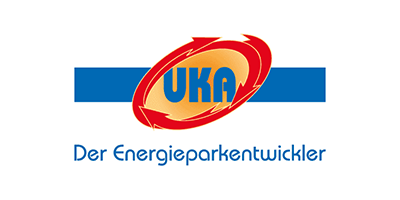Fernheizwerk Neukölln AG
Controlled heating
The district heating plant in Berlin’s Neukölln district essentially offers only one product at present – and that is district heating. But there’s still plenty to plan, analyse and report for corporate performance management, as Christiane Hoße, Head of Accounting and Corporate Performance Management, knows very well.
The listed company, Fernheizwerk Neukölln AG, has tasks that it performs regularly, especially in reporting. Just looking at its own business is not enough: reports are also produced at regular intervals as part of its group reporting requirements.
The administrative staff at the district heating plant have been using the Corporate Planner software program to do this work for years. All actual data are collected and evaluated in the corporate performance management system. The figures are imported to Corporate Planner from the pre-system Varial through an interface. These figures are supplemented with data from a special customer invoicing program that records the values and information on the consumption of each connected building. All values are summarised, analysed and presented in clear reports in cost management. This means that, as well as the results being available to the management in a clear format and without delay, they can be used by the back-office staff for answering the shareholders’ questions during the annual general meeting.
In addition to the reporting, Corporate Planner has long been used at the district heating plant for depicting the budgeted P&L and the investment plan. The company’s P&L is displayed in the typical Corporate Planner tree structure, in a view based on the German Commercial Code for the individual financial statement, and in a cost-of-sales structure for the consolidated financial statement and for group reporting.
Expansion potential
Fernheizwerk Neukölln AG is a company with a local catchment area predetermined by the range of the installed district heating pipes. New customers, i.e. new district heat connections, can be gained by densification measures within the existing service area as well as by network expansion. Any expansion of the pipe network is associated with construction costs that are often considerable, i.e. investments whose profitability needs to be established. That is why Christiane Hoße has set her sights on integrating a detailed investment plan into her corporate performance management.
She and her colleagues are also following up on what they wanted at the outset, which is to set up an integrated financial plan and a budgeted balance sheet. In each quarter, a full-year forecast is prepared. Data from many different Excel sources and variants have until now converged in these budgeted balance sheets. To replace this process, a clear, standardised procedure that uses the integrated financial planning model is to be introduced.
For these complex requirements, the existing approach is simply no longer adequate. Ms Hoße and her division manager therefore decided to switch to the database version of Corporate Planner. Together with a Corporate Planning consultant, they put the existing data within the business into a structure, thereby forming the basis for an integrated plan. On that basis, the structures for the financial plan and the budgeted balance sheet were built.
Structuring and sorting the business data, however, are just one part of the changeover. While the database version is being implemented, the focus is on the optimisation of the planning processes. All those involved should be able to enter their planning data in the same manner, preferably directly.
In particular, investment and expense planning in the individual departments is to be brought into line. About ten employees from the departments, acting as the cost centre managers, regularly draw up a plan of the investment costs, maintenance costs and other costs for their department. For them, it is essential to know when maintenance or construction costs for the production and distribution facilities will arise, and how much these costs will be. Previously, the cost centre managers worked in isolation with their own formulae in diverse Excel sheets. It was just the end results that found their way into Corporate Planner. This disorganised and unstructured solution is now to be done away with for good.
CP-Excel instead of Excel
Ms Hoße has found that the integration of Corporate Planner and CP-Excel is a straightforward and extremely practical solution. Predefined templates in Excel format serve as input masks for entering the plan and forecast data. The departmental staff, used to working in Excel, need not get used to anything very different, and can carry on working in their familiar environment – the difference being that the data are written directly to the Corporate Planer database, ready for use in an overall plan without any further imports required. Christiane Hoße had attended CP-Excel training in Hamburg as preparation beforehand and can share her knowledge with her colleagues.
In the very near future, following a trial phase at Fernheizwerk Neukölln, electricity will be produced in addition to heat and fed into the local grid. With the new Corporate Planner model up and running, the district heating plant’s corporate performance management is well prepared for depicting several products instead of just the one and for adapting to changing business processes.
"Corporate Planner provides us with valuable support in the planning process, in group reporting and in the analysis of the actual data."
Christiane Hoße
Head of Accounting and Controlling






